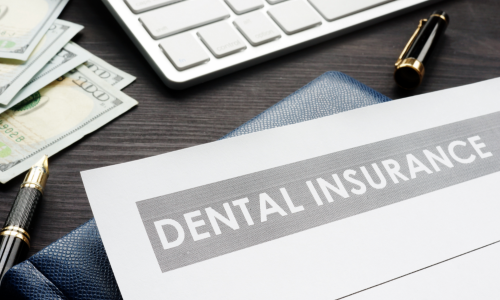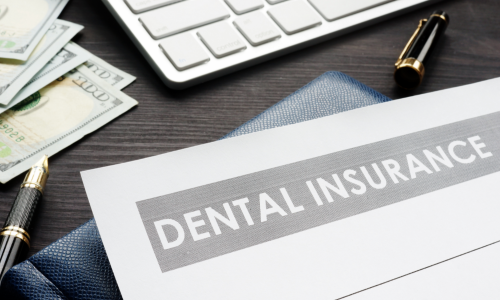How to Save Big on Dental Care: The Ultimate Guide to Dental Insurance

Did you know that nearly 40% of Americans skip dental care due to high costs?It’s a shocking statistic, but it’s also one that highlights a very real problem: dental care can be expensive, and many people avoid necessary treatments to save money. Unfortunately, this can lead to bigger dental issues down the line—ones that are even more costly to fix.

But here’s the good news: dental insurance can help you save big on dental care.Whether you need routine checkups, fillings, cleanings, or even major procedures like crowns or root canals, the right dental insurance plan can reduce your out-of-pocket expenses and help you maintain good oral health without breaking the bank.In this ultimate guide, we’ll show you exactly how to make dental insurance work for you. From choosing the right plan to maximizing your benefits, you’ll learn how to get the most value from your dental coverage and save money on treatments. By the end of this guide, you’ll not only understand the ins and outs of dental insurance but also know how to use it to your advantage, ensuring that you get the care you need without the hefty price tag.
Dental care costs in the U.S. have been steadily rising, making it harder for many people to afford the care they need. Routine checkups, cleanings, and preventive care are becoming more expensive, while major dental procedures such as fillings, crowns, root canals, and orthodontics can carry hefty price tags that can easily run into the thousands of dollars. In fact, the average cost of a basic dental cleaning can range anywhere from $75 to $200, and more extensive treatments like root canals can cost between $500 to $2,000 or more.
As a result, many Americans choose to skip dental visits to avoid the financial burden. According to recent surveys, nearly 40% of adults report avoiding dental care due to cost concerns. However, this avoidance often leads to worsened oral health, resulting in even more expensive procedures down the road.
Dental insurance helps reduce the financial burden of dental care by covering part of the costs for preventive and restorative treatments. While dental insurance doesn’t typically cover 100% of your treatment, it can significantly lower your out-of-pocket expenses, making it easier to afford both regular checkups and unexpected procedures. The key benefit is that it spreads the costs across manageable monthly premiums, co-pays, and deductibles, which helps you budget for oral care.
For instance, most dental plans cover preventive care, like biannual cleanings and exams, at little to no cost, allowing you to maintain oral health before issues become severe and expensive. In the event that you need more complex procedures, dental insurance helps offset the cost, making these treatments more accessible.
One of the biggest advantages of dental insurance is the focus on preventive care. Most dental plans cover essential services like cleanings, exams, and X-rays 100%, meaning you don’t have to pay anything out of pocket for these routine visits. Regular dental checkups are crucial because they help catch problems early, such as cavities or gum disease, before they require costly treatments like fillings, root canals, or extractions.
By staying on top of preventive care, you can avoid expensive procedures later on. For example, catching a cavity early may only require a simple filling, whereas ignoring it could lead to a root canal, which is far more expensive. With dental insurance covering preventive services, you not only ensure better oral health but also save money in the long run.
Types of Dental Insurance Plans
PPO (Preferred Provider Organization)
PPO dental plans are one of the most popular types of dental insurance because they offer flexibility when choosing a dentist. With a PPO plan, you have a network of preferred dentists and specialists who provide services at discounted rates. While you can see any dentist you like, visiting an in-network provider typically saves you more money on your treatments. You’re also not required to get a referral to see a specialist.
Pros
– Flexibility to choose your dentist, even out-of-network.
– No need for referrals to see specialists.
– Usually offers a larger network of dentists.
Cons
– Higher premiums compared to other types of plans.
– Out-of-network care may come with higher out-of-pocket costs.
HMO (Health Maintenance Organization)
HMO dental plans are more restrictive than PPO plans but tend to have lower premiums. With an HMO plan, you must choose a primary care dentist (PCD) from the network. If you need to see a specialist or get more advanced treatment, you usually need a referral from your PCD. This limits your flexibility but helps keep costs down.
Pros:
– Lower premiums and out-of-pocket costs.
– Simple to navigate, with no need to worry about paperwork or claims.
Cons:
– Limited choice of dentists and specialists.
– Requires referrals for specialty care.
Indemnity Plans
Indemnity plans, also known as traditional or fee-for-service plans, are the least common but offer the most flexibility. With an indemnity plan, you pay the dentist directly, and your insurance reimburses you later. There is no network, so you can visit any dentist you prefer. However, indemnity plans typically cover a smaller percentage of the treatment cost, and they often come with higher premiums and deductibles.
Pros:
– Maximum flexibility to choose any dentist.
– No network restrictions or referrals required.
Cons:
– Higher premiums and out-of-pocket costs.
– Requires you to pay upfront and get reimbursed.
Dental Discount Plans
Dental discount plans are not insurance, but they are an alternative to traditional dental coverage. These plans offer members discounts at participating dentists, typically around 20-50% off regular fees. While these plans don’t cover costs directly like insurance, they can be a good option for those who don’t qualify for traditional dental insurance or prefer a more budget-friendly choice.
Pros:
– No waiting periods or annual limits.
– Access to discounted dental care.
– Typically lower upfront costs.
Cons:
– No coverage for major procedures; discounts only apply.
– You pay the full discounted rate upfront.


